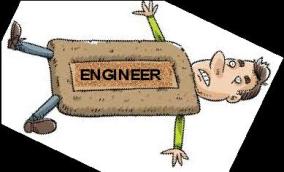One of Shigeo Shingo’s popular status quo targets was engineers, whom he placed in three categories: table engineers, those who just sit around a table and talk about problems; catalog engineers, those who think the solution to every problem can be found in a catalog; and nyet engineers, those who say no to every request (nyet is Russian for “no”).
|
ADVERTISEMENT |
On one rare occasion, I heard Shingo retell his engineer category story in the presence of my company’s CEO, Bob R., who was himself an engineer. “I’m a can-do engineer!” Bob bristled in response. Although I’m not a big fan of stereotypes, I smiled at Bob’s retort. I think Shingo made jibes to shock people, in this case our CEO, into consciousness.
Similarly, another teacher, Ryuji Fukuda, once commented, “Engineers should polish their brains, not their shoes.” Fukuda offered the comment as light humor, but I recall a couple engineers in our group were not amused. “I feel like a doormat,” one engineer said to me. “When things go wrong, production just blames us.”

…
Comments
Engineers
Too often organizations stovepipe their staff into sales, production, quality and engineering departments that reinforce both stereotypes and insularity so that engineers reinforce their natural isolationist tendancies to become a closed caste that often treats input from other parts of the organization with suspicion if not outright hostility. This happens in other parts of the organization as well; but, engineers, due to the personality traits that make them good engineers, are especially prone. Organizations need to build cross-functional teams with limited lifespans that erase these barriers. Engineers need to learn to open their ears to ideas of others.
Add new comment